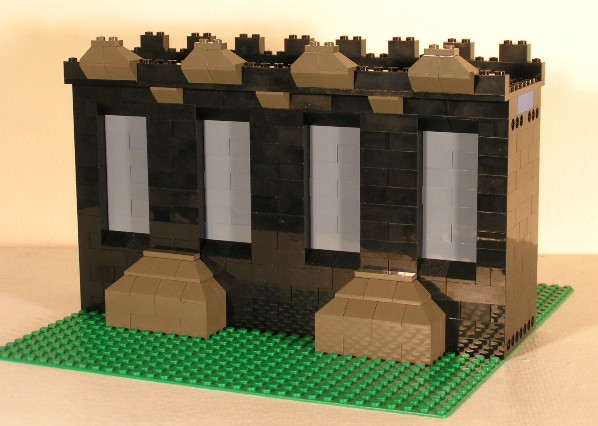To Fit with the Current CCC Castle Wall





This is a new type of tall LEGO castle wall that is made to be built in modular sections.
Let me say at the beginning that this tall wall standard is NOT meant to replace
the current Classic Castle City (CCC) wall standard.
This tall wall standard is meant to be used along with the current CCC walls.





Here's a quick rundown of the similarities and differences that the tall walls have with the CCC walls
| • Tall wall sections will be built along the center of 32X32 baseplates | • They're taller (of course) | |||
| • They will be modular so that they connect with the sections of other builders | • They are 8 studs thick, and the top walkway plate is 10 studs wide/thick | |||
| • They will be a standard number of bricks high + 1 plate for the top walkway | • If connected to the regular CCC walls, they'll require height adaptor sections | |||
| • The ends of the tall walls will have Technic bricks in them at a certain height for connecting it to the next section | • A section that has a gate needs to be at least 2 baseplates wide | |||
| • Builders can include structures that are built into the wall | • The crenellations don't have to be one 1X layer with an intermitant 1X2 brick top layer |


 Now you may be wondering to yourself, "What are you supposed to do if you have both CCC Walls and Tall Walls, and you want them to join?"
Now you may be wondering to yourself, "What are you supposed to do if you have both CCC Walls and Tall Walls, and you want them to join?"


